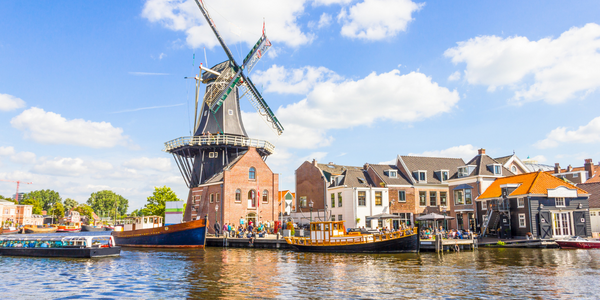Technology Category
- Analytics & Modeling - Machine Learning
- Sensors - Utility Meters
Applicable Industries
- Buildings
- Cities & Municipalities
Use Cases
- Building Energy Management
- Energy Management System
About The Customer
Hørsholm Municipality is a public building owner in Denmark. The municipality is committed to transitioning to a sustainable future and reducing its CO2 emissions. It is actively seeking solutions that do not require significant investments in new technology or a fundamental reorientation of their way of life. The municipality has been working purposefully with artificial intelligence and data-driven energy management since 2021. The project is a collaboration between Hørsholm Municipality, 4B Consulting, and Ento.
The Challenge
Hørsholm Municipality, a public building owner in Denmark, was faced with the challenge of transitioning to a sustainable future. Like many other municipalities, the perception was that sustainable investments often come with high costs. The municipality was also under pressure to reduce its CO2 emissions, a task that required a significant shift in their energy management approach. The challenge was to find a solution that would not only help reduce carbon emissions but also unlock substantial savings. The municipality needed a solution that would not require million-dollar investments in new technology or a fundamental reorientation of their way of life.
The Solution
The solution came in the form of artificial intelligence and 100% data-driven energy management. The municipality partnered with 4B Consulting and Ento to implement this solution. The AI measures electricity consumption on 16 different parameters every hour, which can impact the individual property’s electricity consumption. These parameters include wind speed, wind direction, day of the week, day of the year, a particular time of the day, solar radiation, among others. Apart from electricity consumption, Ento's solution is also used to monitor and analyse district heating, gas and water consumption across the municipality’s property portfolio. The goal is to map consumption data from Hørsholm Municipality’s total building portfolio by 2023 and adjust the municipality’s operation to 100 per cent data-driven energy management.
Operational Impact
Quantitative Benefit

Case Study missing?
Start adding your own!
Register with your work email and create a new case study profile for your business.
Related Case Studies.

Case Study
Turning A Stadium Into A Smart Building
Honeywell created what it called the “intelligent system” for the National Stadium in Beijing, China, turning the venue for the opening and closing events at the 2008 Summer Olympics into a “smart building.” Designed by highly controversial artist Ai Weiwei, the “Bird’s Nest” remains one of the most impressive feats of stadium architecture in the world. The 250,000 square meter structure housed more than 100,000 athletes and spectators at a time. To accommodate such capacity, China turned to Honeywell’s EBI Integrated Building Management System to create an integrated “intelligent system” for improved building security, safety and energy efficiency.

Case Study
Energy Saving & Power Monitoring System
Recently a university in Taiwan was experiencing dramatic power usage increases due to its growing number of campus buildings and students. Aiming to analyze their power consumption and increase their power efficiency across 52 buildings, the university wanted to build a power management system utilizing web-based hardware and software. With these goals in mind, they contacted Advantech to help them develop their system and provide them with the means to save energy in the years to come.
.png)
Case Study
Smart Street Light Network (Copenhagen)
Key stakeholders are taking a comprehensive approach to rethinking smart city innovation. City leaders have collaborated through partnerships involving government, research institutions and solution providers. The Copenhagen Solutions Lab is one of the leading organizations at the forefront of this movement. By bringing together manufacturers with municipal buyers, the Copenhagen Solutions Lab has catalyzed the development and deployment of next-generation smart city innovations. Copenhagen is leveraging this unique approach to accelerate the implementation of smart city solutions. One of the primary focus areas is LED street lighting.

Case Study
Buoy Status Monitoring with LoRa
The Netherlands are well-known for their inland waterways, canals, sluices and of course port activities. The Dutch Ministry of Infrastructure indicates that there are thousands of buoys and fixed items in and near water environments that would profit from IoT monitoring. One of the problems with buoys for example, is that they get hit by ships and the anchor cable breaks. Without connectivity, it takes quite some time to find out that something has happened with that buoy. Not to mention the costs of renting a boat to go to the buoy to fix it. Another important issue, is that there is no real-time monitoring of the buoys at this moment. Only by physically visiting the object on the water, one gains insight in its status.

Case Study
Barcelona Case Study
Barcelona’s heavy traffic and its associated high levels of pollution were the primary factors that motivated some companies and universities to work on strategies for improving traffic in the city centre. Bitcarrier is one of the technologies involved in the In4Mo Project, whose main objective is to develop the applications that form the core of smart mobility, one of the fundamental pillars of the smart city concept.








